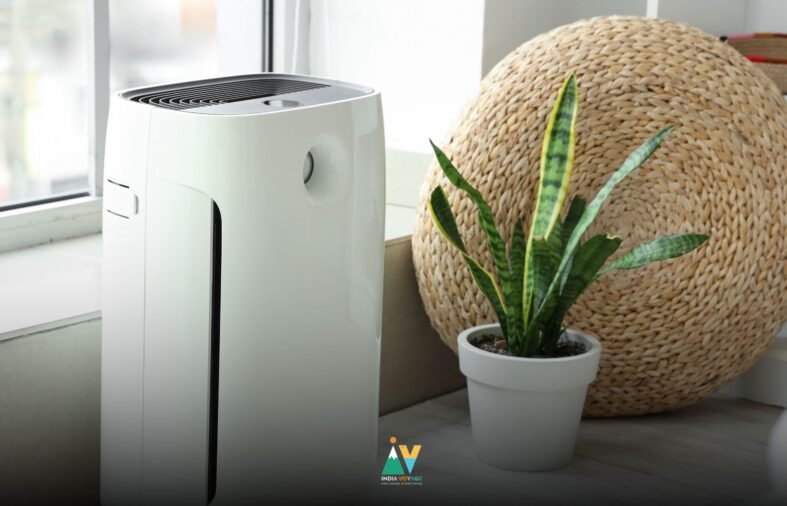India’s air pollution crisis is fueling a surge in air purifier sales, as urban households seek relief from hazardous air quality. With 65 of the world’s 100 most polluted cities, including Delhi, which often records Air Quality Index (AQI) levels exceeding 400, the nation faces a public health emergency. PM2.5 levels, frequently 10-20 times above the World Health Organization’s safe limit of 5 µg/m³, contribute to approximately 2 million deaths annually. This dire situation is driving a rapidly growing air purifier market, transforming these devices from luxury items to household essentials.
A Growing Market Driven by Necessity
The Indian air purifier market, valued at INR 777.75 Crore (USD 507.5 Million) in 2024, is projected to reach INR 3520.77 Crore (USD 1,813.5 Million) by 2033, growing at a Compound Annual Growth Rate (CAGR) of 16.30%. Some estimates suggest it could hit USD 1,169.10 Million by 2030, with a CAGR of 28.51% from 2023 to 2030. This growth is most pronounced in urban centers like Delhi-NCR, which accounts for roughly 75% of sales, followed by cities such as Mumbai, Bangalore, and Chennai. Seasonal spikes, particularly during October-November when AQI in Delhi-NCR can soar to 978 or higher, have led to sales increases of 20-50% for brands like Kent RO Systems, Xiaomi, and LG Electronics India.
Why Air Purifiers Are in Demand
Several factors are propelling this market expansion:
- Health Concerns: Rising awareness of air pollution’s impact, linked to 1.67 million deaths in 2020, has made air purifiers a priority. They combat indoor pollutants like PM2.5, dust, and volatile organic compounds, reducing risks of respiratory issues such as asthma.
- Urbanization and Income Growth: India’s growing middle class, with increasing disposable incomes, is investing in air purifiers, especially in metros where indoor air can be 100 times worse than outdoor air due to poor ventilation.
- Technological Innovation: Advanced purifiers with HEPA filters, UV-C light, and IoT features are gaining popularity. Startups like Airth, which reported INR 3 Crore in sales in 2024, and Praan, with its filterless HIVE device, are making air purifiers more accessible and efficient.
- Seasonal Pollution: Stubble burning, industrial emissions, and Diwali festivities worsen air quality, particularly in North India, prompting sales surges. For example, Delhi’s PM2.5 levels often exceed 400 µg/m³ during winter months.
Innovative Startups Leading the Way
Indian startups are at the forefront of this market. Airth, showcased at Startup Mahakumbh 2025, offers affordable purifiers that integrate with air conditioners, gaining traction in cities like Chennai and Delhi. Praan’s HIVE, launched in 2023, uses filterless technology for industrial and outdoor use, aiming for 1,000 installations in 2025. UBreathe’s plant-based UBreathe Life purifier, introduced in 2021, combines natural filtration with HEPA technology, reducing AQI from 311 to 39 in just 15 minutes for a 150 sq. ft. room.
Challenges and Opportunities
Despite the boom, challenges persist. High maintenance costs, particularly for filter replacements, and limited rural penetration hinder widespread adoption. Additionally, misleading efficacy claims by some manufacturers have raised concerns, as noted by India’s Consumer Affairs Minister in 2024. However, government initiatives like the National Clean Air Programme (NCAP), targeting a 20-30% reduction in particulate matter by 2025-26, are raising awareness and supporting market growth. Online platforms like Amazon and Flipkart are also boosting sales by offering affordable, portable models for rooms under 300 sq. ft.
A Breath of Fresh Air
As India grapples with its air pollution crisis, air purifiers are becoming indispensable for urban households. With the market poised for significant growth and innovative startups driving accessibility, these devices offer a practical solution to breathe cleaner air. For those in polluted cities like Delhi, Mumbai, or Bangalore, investing in an air purifier is no longer a luxury—it’s a step toward healthier living.











Leave A Reply